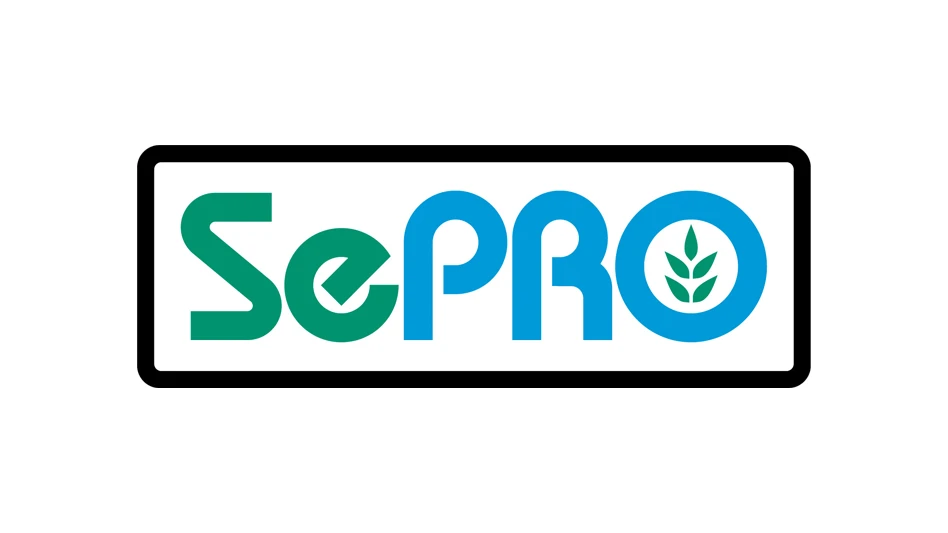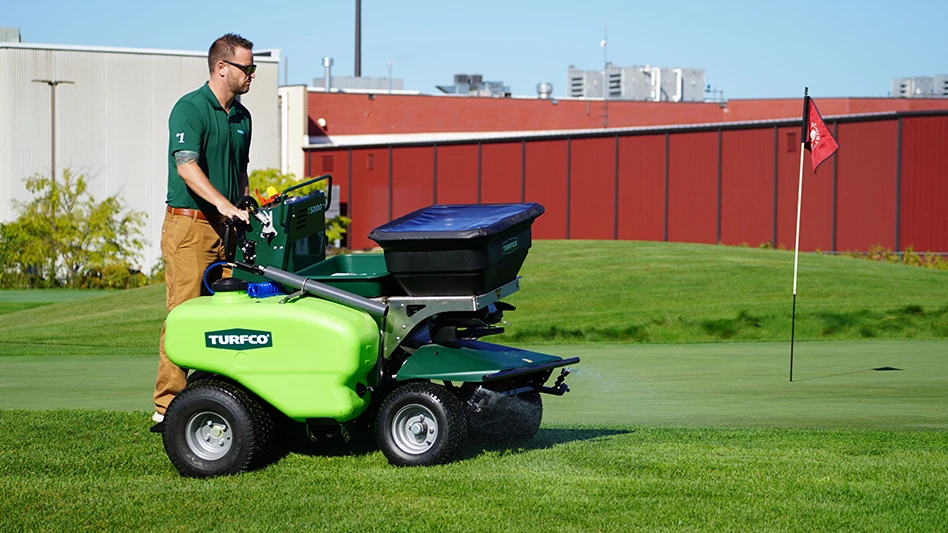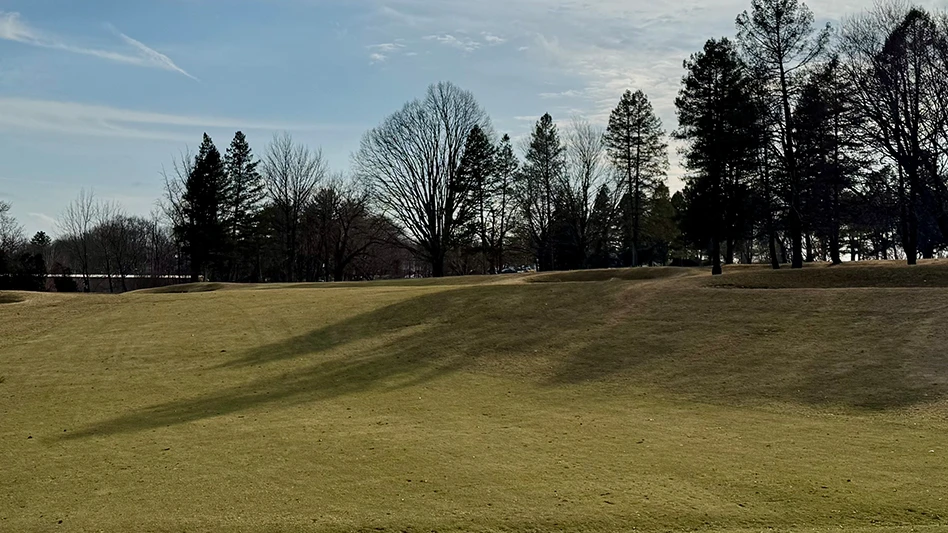Maintaining healthy turf at a certain expected level of conditioning requires much more than applying water, fertilizer and pesticides. Golf course superintendents increasingly adopt holistic approaches to turfgrass management. They combine basic turfgrass science with technological advancements and adapt cultural practices to weather conditions. Each golf course presents its own unique setting for that combination of science and art. Four superintendents share the adaptations they’ve made in their integrated plant management programs to improve course conditions.
Bring it back
Hidden Valley Golf Course in Norco, Calif., overlooks the Corona Valley. The course design focuses on preserving the natural vegetation, dry streams and boulder outcroppings. Because the course was slotted for conversion into homes at one point, it received minimal care for three years.
In January of 2007, Iain Sturge was hired as golf course superintendent with the charge of returning the course to its former prime condition. Having served as an assistant superintendent seven years previously, Sturge realized it would be challenging, especially with a budget about 45 percent of the original $1.2-million budget.
The initial focus was to repair the pumping station and functionality to the irrigation system – 12 to 15 percent of the sprinkler heads weren’t working. Resurrection of equipment to operational status came next followed by the turfgrass itself. The soil profile is about 90 percent dissolved granite, with some pockets of silty clay, which makes improvement difficult. Varietal competition added to the problem.
“When I arrived, the fairways ranged from 75 percent to 100 percent Poa annua,” Sturge says. “We cut back on the water and allowed the Poa to die out with the heat. The course was originally 419 Bermudagrass, but a lot of common Bermuda was seeded in, so it’s a mix now. We’ve pushed the Bermuda, lightly verticutting with hand rakes. We’re topdressing only in the bare areas, using a 50/50 mix of composted cow manure and plaster sand, hand-raking it in. We’ll skip overseeding with ryegrass to reduce stress on the Bermuda.”
As for the greens, which are 75 percent Poa and 25 percent bentgrass, Sturge applies Primo and topdresses and verticuts them every two weeks.
Sturge, who has a small budget for chemicals, is fertilizing with urea, applying one-third of a pound of nitrogen every eight days.
“We’re keeping the greens lean with very low nitrogen and lots of calcium,” he says.
Sturge aerified the greens in May with standard five-eighths-inch coring, which disrupted play and lowered much-needed revenues. So, he used quadra-tining in October for much less impact on play.
“Next year, we’re going to aerify with five-eighths-inch tines in July and again in August, rather than spring and fall,” he says. “It’s not the ideal time for the turf because temperatures can spike over 100 degrees for several consecutive days. But it’s so hot, there’s hardly any play, so we’ll have little impact on the revenue flow. We’ll baby the turf through it and plan to deep-tine the following spring to compensate for it. We’ll continue to adjust, steering toward a more conventional turf management program as we increase revenue.”
Scaling back
Hillcrest Country Club in Long Grove, Ill., is an 18-hole private course northwest of Chicago. About a third of the course’s soil profile is predominately black peat dredged from mid-course wetlands during conversion of part of that area to an irrigation pond. The remainder is silty loam, with the exception of the push-up greens. The greens, tees and fairways are a combination of Poa annua and bentgrass, and the roughs are a mix of bluegrass and ryegrass.
George Ott, CGCS, has eliminated early spring granular fertilization on greens, opting for a dormant application of slow-release organic fertilizer with at least half a pound of nitrogen, balanced with phosphorus and potassium.
“We generally apply it in early November, following a similar granular fertilization in September or early October,” he says. “Our previous program was pushing too much top growth too early. Now we don’t make another granular application until the end of May or the first part of June, depending on the weather.”
Ott recently started matching the frequency of greens topdressing with turf growth.
“We watch the quantity of clippings the greensmowers are getting,” he says. “As the baskets become fuller, we increase the frequency and might even topdress every week for a while. We used to topdress every three weeks all season long. The adjustment keeps our surfaces firm and maintains the faster green speed our golfers want.”
Management implemented budget cuts in 2007, adapting to the regional market, but Ott anticipates a return to previous funding levels within the next year or two. He has cut his staff to 11 from 15 and is adjusting maintenance practices to reduce expenditures while striving to retain quality levels.
“Instead of two postemergent applications for broadleaf weed control, we made one application about two weeks later than the first application of previous years,” he says. “It allowed more weeds to germinate, so there was a short period of visibility to our golfers, but the delay accomplished an effective eradication. It saved the costs of labor and herbicide for a second application.”
Despite the budget reduction, a new irrigation system installation was completed in the spring of 2007. Now, the system has twice as many heads on the fairways, set in three rows rather than two, for better coverage control and greater efficiency.
“With the radio-operated system, we can turn on a single head for a quick syringe instead of sending an individual to hand water by hose, which allows us to allocate that crew time to other areas,” Ott says.
Meeting turf needs
The Country Club of Buffalo in New York is on the site of a former stone quarry. Part of the course is built on the Onondaga Escarpment, the limestone shelf that extends from Ontario, Canada, to Syracuse, N.Y., and is responsible for the formation of Niagara Falls. Six of the greens lie below the escarpment, and 12 lie above it. The pH of the soil and natural water source are high. Turf on the greens, tees and fairways is a mix of Poa annua and bentgrass. The roughs are a mix of ryegrass, Kentucky bluegrass and Poa.
Jim Frank, CGCS, is in his 14th year as golf course superintendent, and when he started, the greens were still 100-percent native soil.
“It’s been an opportunity and a continuing challenge for me to promote a competitive putting surface in today’s world,” Frank says. “We’ve used multiple drill-and-fill procedures over an extended period, incorporating sand to an eight- to 10-inch depth. We’ve worked through all the issues of layering and the variances of physical and chemical properties within the sand. Even when constructing a new green, the cation exchange and the nutritional inputs can vary significantly, so with our older greens we’ve needed to adjust the nutrition and aeration to the overall properties of the soil and try to match turf needs. The designer, Donald Ross, was a genius moving water off the greens, so we haven’t needed to install additional drainage.”
Weather conditions are a continual challenge. Excessive rains as remnants of a hurricane might sweep through. Winter snows might start as early as October and continue into late spring with Lake Erie, the shallowest of the Great Lakes, freezing from shore to shore some years.
“Once September arrives, we need to aerify and verticut, and when it seems we’ve done enough, we do a little more,” Frank says.
“The blizzard of October 12, 2006, that dumped two feet of snow and brought seven- to 14-day power outages hit our course hard,” he adds. “We ended up removing more than 250 damaged trees. That turned into a good thing for our turf, creating additional air circulation and opening some areas to coverage by our irrigation system. Adjusting maintenance practices to the altered microclimates was a little thing compared to the benefits.”
Frank only spot-aerifies greens in the spring, punching areas that have a tendency to dry out or wilt the quickest.
“I’ve added more verticutting to our program, just tickling the surface more often for grooming,” he says. “I’m experimenting with subbing deeper verticutting for core aeration. There’s less surface disruption and the results are surprisingly positive.”
Another change is the use of a new greensmower with floating head technology.
“It’s ironic, but we’re mowing the greens lower, yet doing less damage and causing less stress,” Frank says.
Better ball roll
Located in the Willamette Valley of Portland, Ore., the state’s top grass seed production area, Waverley Country Club was constructed in 1896. Its soil profile is silty loam with one small pocket of heavier clay.
“With our climatic conditions, we’re growing Poa annua whether we want to or not,” says golf course superintendent John Alexander, who has been at Waverley for 11 years. “We’ve decided to encourage it on the greens, tees and fairways. We have some in the rough, along with rye and some spots of fescue and bent.”
With the amount of rain the area receives, drainage is always an issue at Waverley.
“Though some top-end clubs lightly topdress weekly, our budget only allows four to six applications of about a 16th of an inch each time,” Alexander says. “We’ve found providing the plant with oxygen and keeping the soil drained is as beneficial as fertilizer.
Alexander and his staff core aerify the greens twice a year to maintain the firmness they want.
“We plan to core aerate the fairways twice, too, but if spring conditions preclude that, we’ll compensate with a Vertidraining or a couple spikings,” he says. “We’re opting for more solid tining and spiking. The process is so nondisruptive with the rollers, the golfers hardly know we were there.”
Summers are typically mild, with little rain from July through September, yet keeping the Poa healthy is a balancing act.
“We’ll see afternoon stress and irrigate to about 80 percent of the ET rate, just enough to keep the Poa alive and get the playing surface we want,” he says. “If we went to 100-percent ET replacement every night, we’d create too many soft spots. We’ll have three to five crew members hand-watering dry patches most days.”
Alexander uses wetting agents to keep the surface firm and water percolating during the frequent dry down and rewet cycles. He and his staff have started verticutting the greens weekly, reaching about one-sixteenth of an inch below the surface.
“We’re not fighting grainy or thatch conditions with Poa, just creating better ball roll,” he says.
Alexander also has adjusted his fertilization program, basically spoon-feeding the greens with a spray application every seven to 10 days. He also applies two granular applications a year in the fairways.
“We spray them every 14 days, putting down no more than 0.2 pound of nitrogen at any one application,” he says. “We add Primo about every three weeks. It doesn’t cut mowing frequency, but reduces clippings and improves the tightness of the turf for better ball roll.” GCI
Steve and Suz Trusty are freelance writers based in Council Bluffs, Iowa. They can be reached at suz@trusty.bz.

Explore the November 2007 Issue
Check out more from this issue and find your next story to read.
Latest from Golf Course Industry
- Atlanta Athletic Club approves funding for master plan
- Maximizing Cultural Practices and Agronomic Benefits with Minimal Surface Disruption
- Real Answers about Spray Nozzle Choices
- From the Course to the Factory: How Customer Insights Drive Innovation
- New & Proven Enzyme Strategies for Sprayable Thatch Management
- Innovating Tomorrow: Wittek’s New Products & Industry Staples
- PBI-Gordon introduces new field development team
- The Cabot Collection announces move into course management






